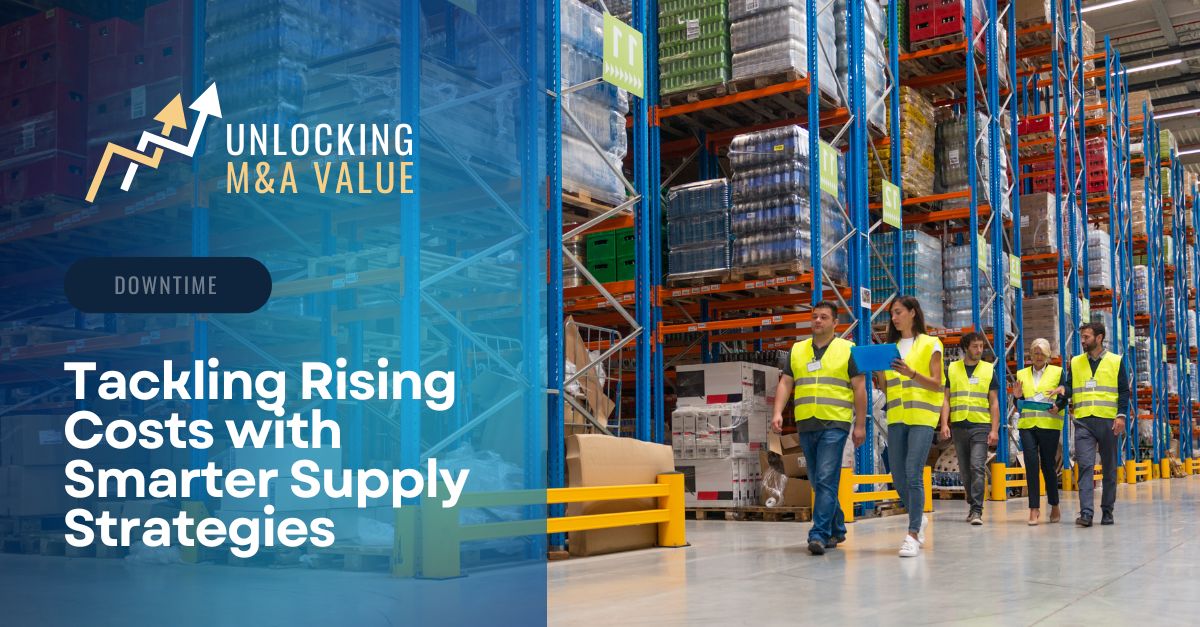
Justin Pethick, Senior Vice President of Strategy & Business Development, POWERS
Input costs are rising, think tariffs, logistics bottlenecks, geopolitical curveballs, and manufacturers held by private equity (PE) firms are feeling the squeeze.
At POWERS, we’re not rushing to judge the culprits; we’re helping our partners in industries like food and beverage and automotive ask the big questions. Two stand out: Should you vertically integrate to stabilize supply and mitigate downtime? And should you localize production to cut global risks? Both tie into our March focus, preventing unplanned downtime. In this case, we’ll focus on preventable causes: critical input shortages such as parts, ingredients, or MRO supplies.
The Cost Challenge
Supply chains are taking hits from all sides. Import tariffs are shifting the math on overseas sourcing, freight costs are jumping with every global hiccup, and unrest in key regions keeps everyone guessing. For a food and beverage manufacturer, a delayed batch of ingredients can stall a production run; for an automotive firm, a missing component can freeze an assembly line. PE-held companies we advise are seeing this play out, costs climb, margins thin, and downtime looms when inputs don’t arrive. The causes? Plenty. The response? That’s what matters.
Question 1Vertical Integration for Stability?
One strategy is owning more of the chain. Picture an automotive firm acquiring a parts supplier to secure critical components, or a food and beverage player buying into packaging to avoid shipping snarls. Vertical integration can lock in supply and costs, shielding against whatever’s driving prices up. We’ve seen it work: a client stabilized their input flow and avoided a multi-day shutdown by bringing a key step in-house. It’s not just about cost, it’s about keeping lines running when suppliers falter.
But it’s not for everyone. The upfront investment is hefty, and food and beverage might do fine with tight partnerships instead of ownership.
Question 2Localizing Production to Cut Risks?
Another angle is bringing production closer to home, U.S. factories or nearby regions. Localizing can trim lead times and dodge global disruptions, whether it’s tariffs or a port backlog. An automotive client we support is weighing a U.S. plant to replace overseas flows; a food and beverage firm’s testing local sourcing after import delays. It’s a buffer against cost spikes and a safeguard for critical inputs, think repair parts or ingredients that, if late, halt everything. Incentives like tax breaks or grants can tip the scales.
The catch? Local labor is scarce, and new production facilities take time to bring on line, one restored client hit early downtime snags before smoothing out.
Downtime: The Stakes
Both paths circle back to unplanned downtime, our focus this month. When critical inputs vanish, plants idle, and profits slip. Vertical integration might secure the pipeline; localizing might shorten it. At POWERS, we’re hands-on, mapping supply chains and cutting downtime risks.
Moving Forward
Rising costs are real, whatever’s behind them, and PE-held manufacturers need options. Vertical integration and localizing production are two worth wrestling with, each a play to keep input supply steady and downtime at bay.
About POWERS
At POWERS, we help unlock M&A value fast and build it for the long term. Our team digs into operations, processes, workforce, supply chains, maintenance, to drive efficiency and accountability. We deliver results: higher output, lower costs, and teams aligned to your vision. Our Digital Production System (DPS) takes it further, giving you real-time visibility into KPIs and execution, so gains stick. Want to maximize your next deal? Let’s talk.
- Speak to an Expert: Call +1 678-971-4711 to discuss your specific challenges and goals.
- Email Us: Get tailored insights by emailing info@thepowerscompany.com
- Request an Assessment: Use our online contact form, and one of our expert manufacturing consultants will reach out to schedule an in-depth analysis of your operations.

